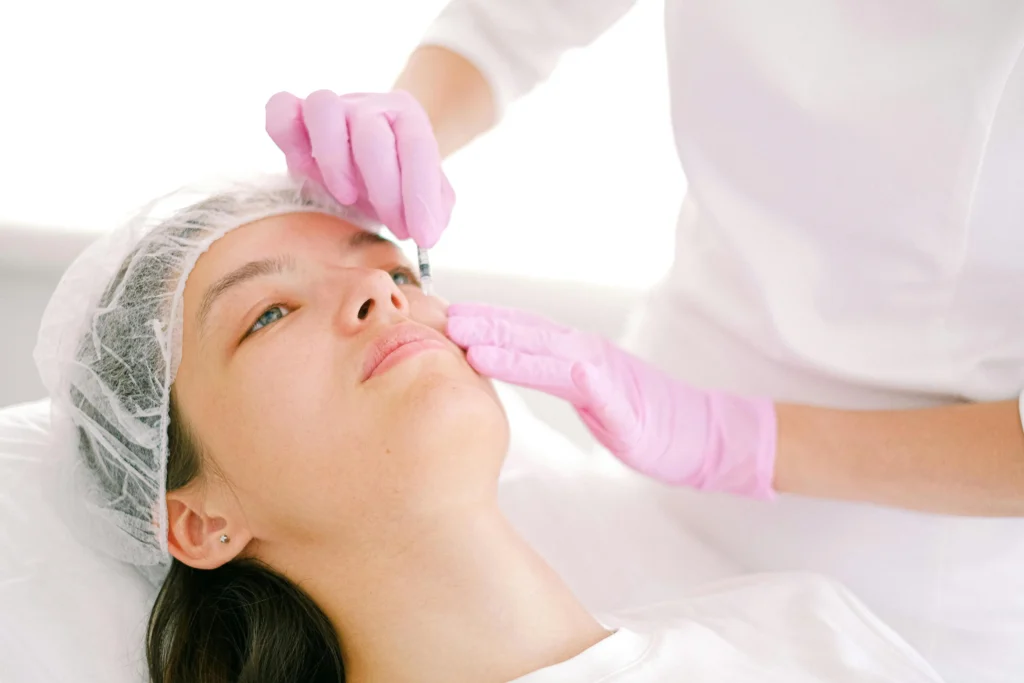Aesthetic medicine has entered a new era: one focused on biological and regenerative approaches.
Rather than filling or tightening, the goal is to stimulate the skin’s natural ability to renew itself.
In this context, polynucleotides have emerged as one of the most exciting innovations — molecules that reactivate cellular processes from within, restoring radiance, firmness, and hydration in a completely natural way.
What Are Polynucleotides?
Polynucleotides (PN) are highly purified DNA and RNA fragments that, when injected into the skin, stimulate regeneration and improve overall skin quality.
They act as biological messengers that help cells repair damage, increase collagen synthesis, and improve oxygenation and hydration.
Originally used in medical fields such as tissue repair and ophthalmology, they are now becoming key in aesthetic medicine for natural skin rejuvenation without adding volume or altering facial expression.
How Do Polynucleotides Work?
Their mechanism of action is multi-layered:
- Stimulate fibroblasts, which produce collagen and elastin.
- Enhance microcirculation, improving oxygen and nutrient supply.
- Increase hydration, thanks to their strong water-binding capacity.
- Reduce inflammation and oxidative stress, two major causes of aging.
The result is smoother, firmer, and more radiant skin — visibly healthier and more elastic.
When to Use Them
Polynucleotide treatments are ideal for:
- Thin or dehydrated skin showing early signs of aging.
- Dull complexions or post-sun damage recovery.
- Neck, décolleté, and hands with fine lines and loss of tone.
- Sensitive or irritation-prone skin types.
They are suitable for both men and women, across all ages, because they support natural skin function rather than imposing artificial changes.
Procedure and Results
The treatment consists of superficial microinjections into the dermis — similar to mesotherapy.
It requires no downtime, and only topical anesthetic if desired. Sessions last around 30 minutes.
Recommended protocol:
3 to 4 sessions, spaced 2–3 weeks apart, followed by maintenance every 4–6 months.
Results are progressive and cumulative, with noticeable improvement after the second session.
Comparing Polynucleotides with Other Regenerative Treatments
| Treatment | Main Mechanism | Typical Outcome |
|---|---|---|
| PRP (Platelet-Rich Plasma) | Growth factors from the patient’s blood | Mild to moderate regeneration, variable by patient |
| Exosomes | Advanced cellular communication | Deep rejuvenation, higher cost and complexity |
| Collagen Stimulators (PLLA, CaHA) | Collagen induction | Lifting and volumizing effects |
| Polynucleotides (PN) | Cellular repair + hydration + anti-inflammatory | Improved skin quality without volume alteration |
Polynucleotides represent the ideal middle ground — they regenerate and hydrate effectively while preserving a natural look.
Key Benefits for Professionals
- Natural, gradual results with high patient satisfaction.
- Versatility — can be combined with lasers, peels, or microneedling.
- Excellent safety profile, minimal side effects or downtime.
- Professional positioning — enhances your reputation as a regenerative aesthetic expert.
How to Communicate with Patients
To successfully integrate polynucleotides into your aesthetic brand strategy:
- Educate your patients: explain that PN treatments improve real skin quality — they don’t “fill.”
- Publish educational content on social media and your blog to strengthen your credibility.
- Use clear visuals (animations, infographics, or licensed models) to explain how regeneration works.
- Align your brand identity with innovation and science-based aesthetics.
Why They Matter for Modern Aesthetic Practice
The appeal of polynucleotides lies not just in their biological action, but in how they align with today’s patient mindset — natural, preventive, and personalized.
They allow professionals to deliver results that feel authentic, building long-term trust and loyalty.
Integrating this treatment into your practice also enhances your visibility and authority as a forward-thinking aesthetic professional.
Conclusion
Polynucleotides have established themselves as a cornerstone of regenerative aesthetic medicine.
Their ability to revitalize, repair, and deeply hydrate the skin makes them one of the most effective and natural treatments available today.
For professionals, adopting polynucleotides is not only a scientific upgrade — it’s a statement of commitment to authentic, patient-centered aesthetics.
